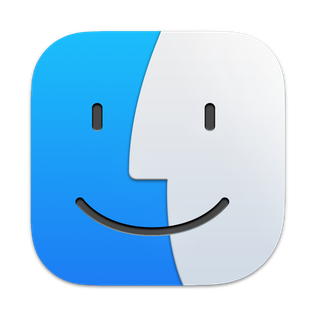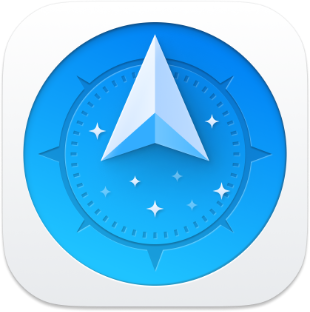| Developer(s) | SE-SOFT.COM |
|---|---|
| Stable release | 1.31.1.610 / 13 June 2010 |
| Operating system | Windows |
| Available in | English |
| Type | File manager |
| License | Proprietary |
| Website | Official website |
SE-Explorer is a freeware portable file manager for Windows which can be used as alternative to Windows Explorer. It is sharply different from FAR Manager and Norton Commander because it is GUI-based application with tabbed interface which made it possible to manipulate more than one directory or file view at the time and it has both types of file managers: orthodox two-panelled manager with two file windows side by side and native explorer emulator.
The application key features are:
The application is written in .NET, so the Microsoft .NET Framework 2.0 is required.
Main executable file can be easily copied onto USB flash drive and used as a portable application.
SE-Explorer is a freeware and requires no registration or activation. You can download and use it for your own needs for free.
The first version of SE-Explorer was uploaded to the site on 20 June 2008. At present the latest version is 1.31.1.610 which now has "Folder Comparison" feature.
A file manager or file browser is a computer program that provides a user interface to manage files and folders. The most common operations performed on files or groups of files include creating, opening, renaming, copying, moving, deleting and searching for files, as well as modifying file attributes, properties and file permissions. Folders and files may be displayed in a hierarchical tree based on their directory structure.
Konqueror is a free and open-source web browser and file manager that provides web access and file-viewer functionality for file systems. It forms a core part of the KDE Software Compilation. Developed by volunteers, Konqueror can run on most Unix-like operating systems. The KDE community licenses and distributes Konqueror under GNU GPL-2.0-or-later.

The Finder is the default file manager and graphical user interface shell used on all Macintosh operating systems. Described in its "About" window as "The Macintosh Desktop Experience", it is responsible for the launching of other applications, and for the overall user management of files, disks, and network volumes. It was introduced with the first Macintosh computer, and also exists as part of GS/OS on the Apple IIGS. It was rewritten completely with the release of Mac OS X in 2001.

File Explorer, previously known as Windows Explorer, is a file manager application and default desktop environment that is included with releases of the Microsoft Windows operating system from Windows 95 onwards. It provides a graphical user interface for accessing the file systems. It is also the component of the operating system that presents many user interface items on the screen such as the taskbar and desktop. Controlling the computer is possible without File Explorer running.

In interface design, a tab is a graphical user interface object that allows multiple documents or panels to be contained within a single window, using tabs as a navigational widget for switching between sets of documents. It is an interface style most commonly associated with web browsers, web applications, text editors, and preference panes, with window managers, especially tiling window managers, being lesser known examples.
The following tables compare general and technical information for a number of notable file managers.

xplorer² is a dual-pane file manager for Microsoft Windows operating systems, developed by Nikos Bozinis. It offers the functionality of orthodox file managers through an interface similar to the familiar Windows Explorer. Some of its features are tabbed file management within each pane, viewing and editing text files, searching for files using arbitrary criteria, the ability to compare and synchronize folders and the ability to perform queued or concurrent copy and move operations with error handling. The file finder module is claimed to be “outclass” from other search tools.
Compared with previous versions of Microsoft Windows, features new to Windows Vista are very numerous, covering most aspects of the operating system, including additional management features, new aspects of security and safety, new I/O technologies, new networking features, and new technical features. Windows Vista also removed some others.
The Windows shell is the graphical user interface for the Microsoft Windows operating system. Its readily identifiable elements consist of the desktop, the taskbar, the Start menu, the task switcher and the AutoPlay feature. On some versions of Windows, it also includes Flip 3D and the charms. In Windows 10, the Windows Shell Experience Host interface drives visuals like the Start Menu, Action Center, Taskbar, and Task View/Timeline. However, the Windows shell also implements a shell namespace that enables computer programs running on Windows to access the computer's resources via the hierarchy of shell objects. "Desktop" is the top object of the hierarchy; below it there are a number of files and folders stored on the disk, as well as a number of special folders whose contents are either virtual or dynamically created. Recycle Bin, Libraries, Control Panel, This PC and Network are examples of such shell objects.

GNOME Commander is a 'two panel' graphical file manager for GNOME. It is built using the GTK+ toolkit and GVfs.
This article details features of the Opera web browser.

XYplorer is a file manager for Windows XP, Vista, 7, 8, 10, and 11. XYplorer is a hybrid file manager that combines features found in navigational and orthodox file managers. In addition to dual folder panes it features a file tree and a tabbed interface supporting drag-and-drop between tabs and panes. The program used to be available as Pro and Free versions. The Free version is still available as a feature-limited freeware version. The "Pro" was then dropped and just known as "XYPlorer". The program is available in a fully featured trialware version.
AllMyNotes Organizer is an outliner application for Windows, and it allows you to store all documents and notes in a single storage file. Documents are organized in a hierarchical tree representation for quick browsing by topic. A portable version which can be installed on a USB flashdrive, iPod, or removable hard disk drive which can be used on any PC without the need to be installed is also available.
Nomad.NET is a freeware orthodox file manager (OFM) for Microsoft Windows. Some features include a built-in FTP client, archive file navigation, folder comparison and synchronization, and a multi-file renaming tool. In addition to being an orthodox file manager, Nomad.NET features two-windowed mode, tree window for each panel, horizontal and vertical splitting of the windows, tab browsing etc.

Double Commander is a free and open-source multi-platform two-panel orthodox file manager that is inspired by the Microsoft Windows-only Total Commander.

Haiku is a free and open-source operating system compatible with the now discontinued BeOS.

Path Finder is a Macintosh file browser developed by Cocoatech. First released in 2001 simultaneously with the public release of Mac OS X 10.0 (Cheetah), it replicates or integrates most of the features of the Finder, but introduces additional functionality similar to that found in Windows's File Explorer, the defunct Norton Commander, and other third-party file browsers developed for a variety of platforms.